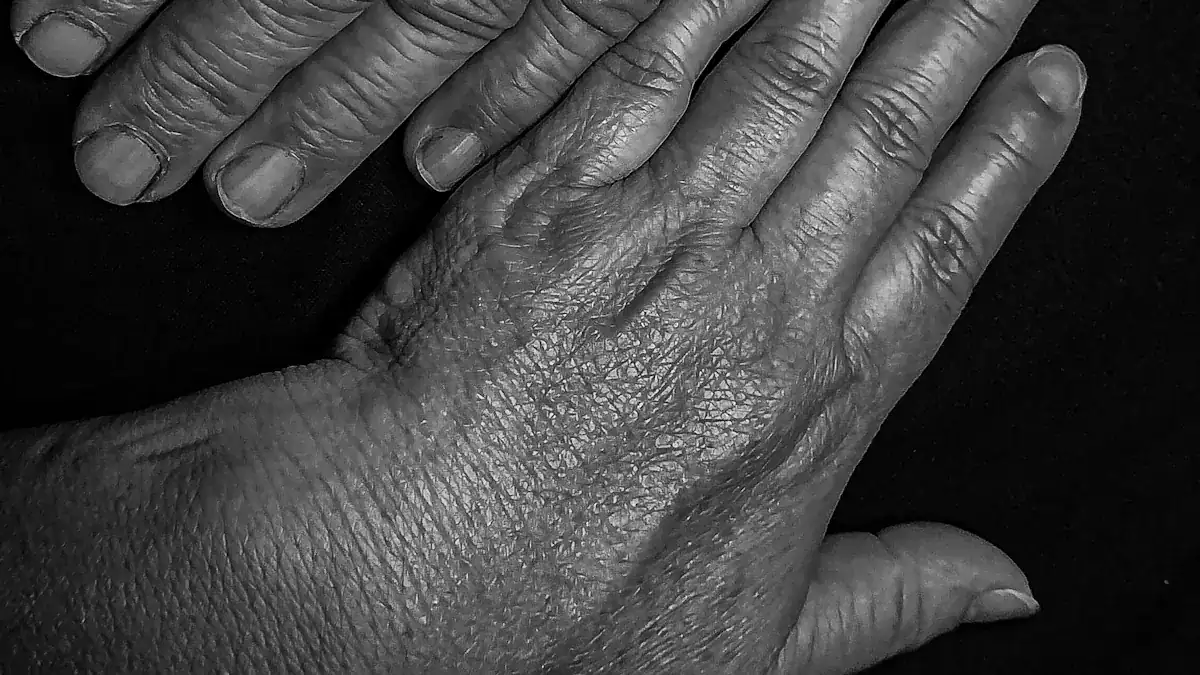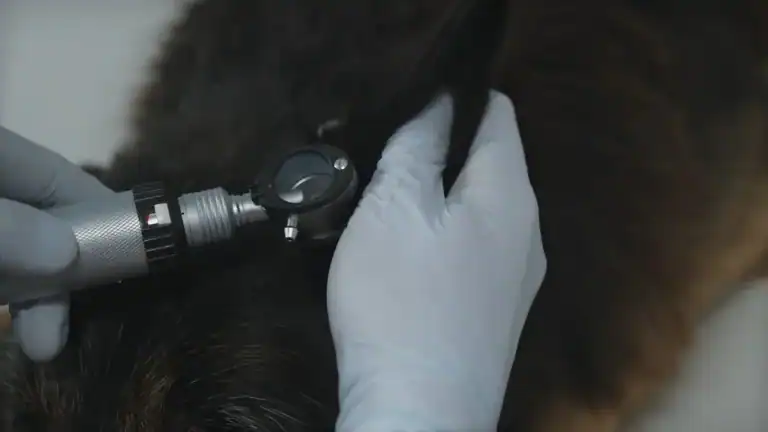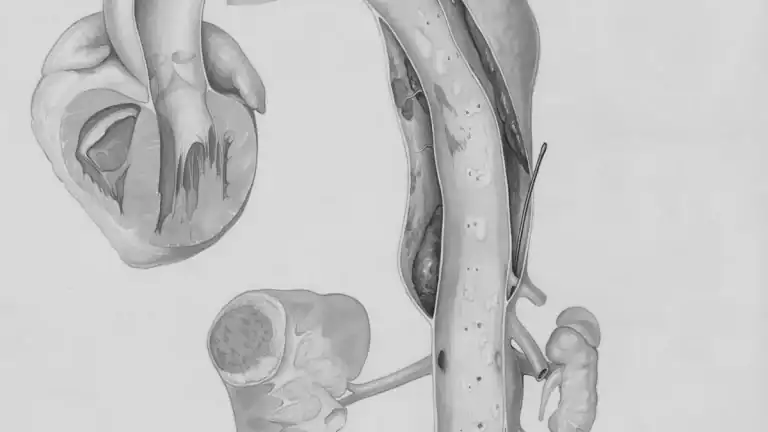
Experiencing middle knuckle pain finger, also known as PIP joint pain, is a common issue. This discomfort can range from a minor ache to severe finger joint pain. You might feel dull, throbbing, or shooting pain in your knuckle, often with stiffness, swelling, or weakness.
The most common cause of knuckle pain is arthritis, a disease causing joint inflammation. Other reasons for joint pain in your hands include injuries, tendonitis, and conditions like mixed connective tissue disease. Understanding your finger joint pain is crucial for proper management and knowing when to seek professional help for your knuckle pain.
Key Takeaways
Middle knuckle pain often comes from arthritis, injuries, or repetitive strain. Understanding the cause helps you find the right treatment.
You can get quick relief for finger pain. Rest your hand, use ice or heat, and take pain medicine. Splints can also help.
See a doctor if your pain does not go away. Also, see a doctor if you have swelling, numbness, or trouble moving your finger.
Long-term care for arthritis includes therapy, medicine, and healthy habits. Eating well and using assistive devices can also help.
Regular doctor visits are important. They help manage your condition and keep your joints healthy over time.
Understanding Middle Knuckle Pain

Finger Joint Anatomy
Your fingers contain several small bones and joints. The middle knuckle, known as the Proximal Interphalangeal (PIP) joint, is crucial for hand movement. This joint sits between the first two bones of your finger. You find it just below the top two bones. It allows your finger to bend and extend. Each finger has three bones called phalanges.
The bone closest to your palm is the proximal phalanx. The middle phalanx comes next, followed by the distal phalanx at the fingertip. Ligaments connect these finger bones. They help stabilize your knuckle. Tendons also connect muscles to bones, allowing movement. For example, each finger joint has two collateral ligaments. These stop your finger from bending sideways. The volar plate is another strong ligament. It prevents your PIP joint from bending backward too far. Understanding this anatomy helps you understand your finger joint pain.
Symptoms and Red Flags
Middle knuckle pain finger can show up in different ways. You might feel a dull ache or a sharp, stabbing sensation.
Many people experience stiffness in the joints. This makes it hard to move or bend your fingers. You may also notice swelling or redness around the knuckle. Sometimes, the pain worsens when you move your fingers. These are common symptoms of knuckle pain.
However, some signs mean you should see a doctor. Look out for persistent pain that does not go away. Significant loss of function in your finger is also a red flag. If you see visible changes like discoloration or an abnormal finger angle, seek medical help. Bruising, numbness, or tingling in the affected finger can point to a fracture. Do not ignore these symptoms of knuckle pain, especially if you have pain and swelling that gets worse. Early attention can prevent further issues with your joint pain.
Causes of Middle Knuckle Pain
Many factors can lead to middle knuckle pain finger. While arthritis is a very common cause, other issues can also create discomfort. Understanding these different causes of finger joint pain helps you find the right path to relief.
Injuries and Trauma
Direct injuries often cause sudden knuckle pain. You might hit your finger, fall on your hand, or hyperextend your finger. These events can lead to sprains, where ligaments stretch or tear. You could also suffer a fracture, which is a broken bone in your finger. Dislocations, where the bones move out of their normal position, also cause severe finger joint pain. These types of trauma require immediate attention.
Repetitive Strain
Repeated movements or gripping actions can strain your middle knuckle. Activities like typing, playing musical instruments, or using tools for long periods can lead to overuse injuries.
This constant stress inflames the tendons and ligaments around your knuckle. This inflammation then causes pain and stiffness. You might notice this knuckle pain worsens during or after these activities.
Non-Arthritic Inflammation
Sometimes, inflammation happens without arthritis. Several conditions can cause this:
Bursitis: This is inflammation of the bursa. Bursae are small, fluid-filled sacs that cushion your bones, tendons, and muscles. When they get inflamed in your finger, you feel pain, tenderness, and reduced movement.
Scleroderma: This autoimmune condition makes your skin hard. It can cause stiff, swollen skin around your finger joints. Your skin might change color and become taut or shiny, making your fingers immobile and painful.
Infection: Bacteria, viruses, or fungi can infect your finger. This causes pain, swelling, and heat around the knuckle. You might see skin darkening or an abscess. Infections can also lead to fever and chills.
Other Conditions (e.g., Cysts)
Various other conditions can cause lumps or growths that lead to knuckle pain.
Bouchard nodes: These are bony growths on the middle joint of your fingers. They often signal hand osteoarthritis.
Rheumatoid nodules: If you have rheumatoid arthritis, you might develop firm lumps under your skin. These often appear near joints that experience trauma, like your finger knuckles.
Ganglion cysts: These are common, non-cancerous lumps. They often form near joints or tendons, including on your finger knuckle.
Infection: An infection can also create a lump on or within your finger joint. This can lead to serious conditions like septic arthritis if the infection spreads inside the joint.
Tumors: Lumps near your knuckles can be tumors. These can be benign (non-cancerous) or malignant (cancerous). A common benign type is a giant cell tumor of the tendon sheath, often found near finger joints.
Arthritis and Middle Knuckle Pain

Arthritis is a major cause of middle knuckle pain. It can lead to pain, swelling, stiffness, and even changes in your finger’s shape. You need to understand the different types of arthritis to manage your symptoms effectively.
Osteoarthritis
Osteoarthritis (OA) is a common type of arthritis. It is a degenerative condition. This means it wears down the cartilage in your joints over time. You often find it in the small joints of your fingers, including your middle knuckle. It also affects the base of your thumb. The risk of getting OA goes up as you get older. Most people over 50 start to show symptoms. However, younger people can get it too, especially if they have had joint injuries before.
Nearly half of all women and a quarter of all men will get hand OA by age 85. This includes your middle knuckle, also known as the proximal interphalangeal (PIP) joint. Your small joint closest to the fingertip (DIP joint) and the joint at the base of your thumb (CMC joint) are also commonly affected.
When doctors look at X-rays for OA in your finger joint pain, they often see specific changes. You might see bony growths called osteophytes. The space between your bones might look narrower. This shows cartilage loss. You might also see subchondral sclerosis, which is an area of increased bone density. Sometimes, cysts form under the cartilage. These changes show how the disease progresses.
Rheumatoid Arthritis
Rheumatoid arthritis (RA) is an autoimmune disease. Your body’s immune system mistakenly attacks your own joint tissues. Pain in your finger joints is often one of the first signs of RA. It usually causes chronic inflammation. This means the inflammation lasts a long time.
RA often affects your hands, wrists, and feet. It usually spares the joint closest to your fingertip. You might notice morning stiffness that lasts an hour or even longer. This can be a key symptom. In contrast, osteoarthritis morning stiffness is usually mild and goes away quickly after you start moving. This difference helps doctors tell RA apart from OA.
Psoriatic Arthritis
Psoriatic arthritis (PsA) is another type of arthritis. It affects some people who have psoriasis, a skin condition. PsA can cause your middle knuckle to become swollen and painful.
You might notice specific changes in your nails if you have PsA. Your nails might have small pits or separate from the nail bed. This is called onycholysis. You might also see a buildup of skin cells under your nail, making it look flaky. Your nails can become thick, ridged, or crumbly. They might also change color, appearing white, yellow, brown, or even showing reddish marks from tiny burst blood vessels.
Doctors look for certain signs to diagnose PsA. You might have dactylitis, which means your fingers or toes swell up like sausages. This is a common symptom. Doctors also use a set of guidelines called the CASPAR criteria. If you have inflammatory arthritis, spine disease, or enthesitis (inflammation where tendons or ligaments attach to bone), and score three points on the CASPAR criteria, it suggests PsA. X-rays can show damage to your knuckle in later stages, like narrowing of the joint space or a “pencil-in-a-cup” sign.
Gout and Pseudogout
Gout and pseudogout are types of arthritis caused by crystals forming in your joints. Gout happens when needle-shaped crystals of uric acid build up. Pseudogout, also called acute CPP crystal arthritis, is caused by calcium pyrophosphate crystals. Both conditions can cause sudden, severe pain and swelling in your knuckle.
To diagnose these conditions, doctors often take a sample of fluid from your joint. They look at this fluid under a microscope. For gout, they look for negatively birefringent needle-shaped monosodium urate (MSU) crystals. For pseudogout, they look for weakly positive birefringent, rhomboid-shaped calcium pyrophosphate crystals. Blood tests can check your uric acid levels for gout, but these levels can be normal during an attack. There is no blood test for pseudogout.
Diagnosing Arthritis
If you have persistent middle knuckle pain finger, you should see a doctor. Diagnosing arthritis often involves several steps. Your doctor will ask about your symptoms and do a physical exam. They will check your knuckle for pain, swelling, and how well you can move it.
Imaging tests are very helpful. X-rays can show changes like joint space narrowing or bone spurs, especially in osteoarthritis. However, X-rays might not show early signs of inflammation. MRI and ultrasound are more sensitive. They can detect inflammation, cartilage damage, and bone erosions earlier than X-rays. An MRI gives detailed pictures of both bone and soft tissues. It can show cartilage wear in OA and inflammation in RA. Ultrasound can be even better than MRI for finding inflammation in the joint lining. These tools help doctors understand the cause of your finger joint pain and develop the right treatment plan for your knuckle pain.
Immediate Relief for Finger Joint Pain
Rest and Activity Modification
When your middle knuckle hurts, rest is important. You should avoid activities that make your finger joint pain worse. Give your hand a break. This helps reduce inflammation. You can also change how you do daily tasks. For example, use tools with bigger handles. This puts less stress on your painful knuckle. These simple changes are effective pain relief techniques for finger joint pain.
Hot and Cold Therapy
You can use heat or cold to help your knuckle pain.
Cold Therapy: Apply ice for 15 minutes. Then, allow a 15-minute rest period before reapplying. Do not use ice for more than 20 minutes at a time. This prevents skin damage.
Heat Therapy: Apply heat for 15 to 20 minutes. You can do this up to three times daily. For more severe pain, longer heat therapy sessions, like a warm bath for 30 minutes to two hours, can be beneficial. When using heating packs directly on the area, do not exceed 20 minutes at a time.
Compression and Splinting
Support for your finger can ease pain. Grappz are athletic gloves. They offer maximum finger protection. They feature two finger sleeves. These sleeves join your digits. They act as a finger splint. They still let you maintain full mobility. Ring splints also stabilize your finger. They control the movement of the joint. An occupational therapist can evaluate your hands. They can discuss the benefits of a ring splint. Metal ring splints are durable. They can last over 10 years.
Gentle Exercises
Gentle exercises can improve mobility. They can also help with finger joint pain.
Finger Rolls: Bend your middle and end finger joints. Then, bend your base joints to form a fist. Hold for 5 seconds. Straighten your joints in reverse order. Repeat 5 times per hand.
O Shape: Start with straight fingers, palm down. Curve your fingers inward. Your thumb and fingers should meet to form an “O”. Hold for 5 seconds. Repeat 5 times per hand.
Managing Arthritis-Related Knuckle Pain
Managing arthritis in your middle knuckle requires a long-term approach. You can make lifestyle adjustments. These help reduce your knuckle pain and improve your daily life.
Long-Term Pain Management
You need a consistent plan for long-term pain management. Follow your doctor’s advice for medications. Attend all your therapy sessions. You should also track your symptoms. Note what makes your knuckle feel better or worse. This helps you and your doctor adjust your treatment plan. Consistency is key to controlling your arthritis.
Healthy Lifestyle Choices
Making healthy choices supports your joint health. Regular, gentle exercise keeps your joints flexible. It also strengthens the muscles around them. Choose low-impact activities like walking or swimming. Maintain a healthy weight. Extra weight puts more stress on your joints. These choices can significantly reduce your finger joint pain. They also help prevent future knuckle pain.
Assistive Devices
Many tools can help protect your knuckles. Ergonomic tools reduce strain during daily tasks. Jar openers, large-grip utensils, and button hooks make life easier. Splints or braces can support your finger joints. They reduce stress and pain during activities. An occupational therapist can recommend the best devices for you.
Diet
Your diet plays a big role in managing arthritis. Certain eating patterns can lower inflammation.
Mediterranean Diet: This diet focuses on whole foods. You eat less red meat and ultra-processed items.
DASH Diet: This plan emphasizes nutrient-rich, whole foods. It also helps lower inflammation.
Both diets encourage:
More plants, less red meat.
Minimal ultra-processed foods and added sugars.
Foods like fruits, vegetables, beans, seafood, and healthy fats.
You should minimize foods that can worsen inflammation. These include fried foods, refined sugar, and white starchy foods.
Regular Monitoring
Regular check-ups with your doctor are important. They will monitor your arthritis progression. They can adjust your medications or therapies as needed. Early detection of changes helps manage your condition effectively. This proactive approach helps maintain your quality of life.
Middle knuckle pain finger has many causes. Arthritis is often a main reason. Managing your knuckle pain effectively means understanding its root. Seek early help for your finger joint pain. Combine home care with professional medical advice. If you experience popping, redness, trouble making a fist, or pain lasting over a week, see a doctor. A red, hot, and tender knuckle also needs attention. Consult a healthcare professional for an accurate diagnosis. This ensures a personalized plan. You can improve your joint health and quality of life.




